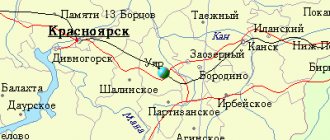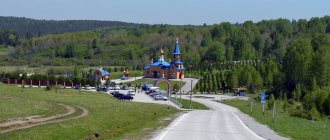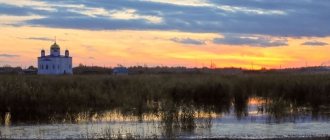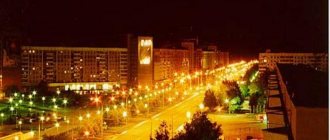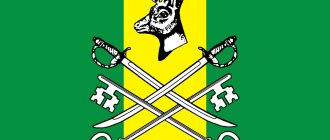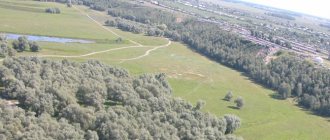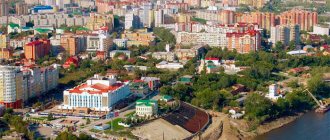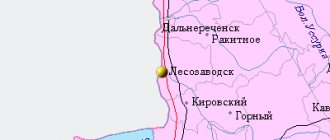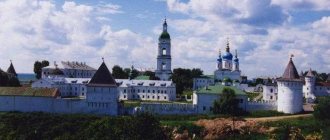Why is Tomsk called a student city?
Even then, fifteen years ago, Tomsk was considered a classic student city. Mainly by the number of different universities and institutes and, of course, the number of young people on the streets. This is what shapes the idea of the city as a university center.
Interesting materials:
How to understand how much grit is in Pilka? How do you understand the word devotion? How to understand the standard? How to tell whether shrimp are boiled or not? How to get to the archive org? How to get to the territory of Chernobyl? How to get into the black wigwam? How to get into darts? How to get to Draenor on a quest? How to get to Kalimdor BFA?
Notes[ | ]
- ↑ 123456789101112
Estimated resident population as of January 1, 2022 and average for 2022. Rosstat (Russian). Date accessed: March 19, 2021. - Gross regional product by constituent entities of the Russian Federation in 1998-2016. (Russian) (xls). Rosstat.
- Gross regional product per capita by constituent entities of the Russian Federation in 1998-2016. MS Excel document
- Decree of the President of the Russian Federation dated November 3, 2018 No. 632 “On introducing changes to the list of federal districts approved by Decree of the President of the Russian Federation dated May 13, 2000 No. 849” (unspecified)
. publication.pravo.gov.ru. Date accessed: November 4, 2022. - The Russian Federation consists of republics, territories, regions, cities of federal significance, autonomous regions, autonomous districts - equal subjects of the Russian Federation (Constitution of the Russian Federation, Article 5, paragraph 1)
- ↑ 1234567891011121314151617181920212223
The permanent population of the Russian Federation by municipalities as of January 1, 2022 (Russian). Retrieved April 27, 2022. Archived May 2, 2022. - ↑ 1234567
Population of the Russian Federation by municipalities as of January 1, 2022 (Russian). Date accessed: October 17, 2022. Archived October 17, 2022. - Demographic situation in modern Russia
- ↑ 12345678910111213141516171819202122
Resident population as of January 1 (persons) 1990-2013 - All-Russian population census 2002. Volume. 1, table 4. Population of Russia, federal districts, constituent entities of the Russian Federation, districts, urban settlements, rural settlements - regional centers and rural settlements with a population of 3 thousand or more (unspecified)
. Archived from the original on February 3, 2012. - Population census 2010. Population of Russia, federal districts, constituent entities of the Russian Federation, city districts, municipal districts, urban and rural settlements (Russian). Federal State Statistics Service. Access date: January 21, 2013. Archived April 28, 2013.
- Table 33. Population of the Russian Federation by municipalities as of January 1, 2014 (unspecified)
. Access date: August 2, 2014. Archived August 2, 2014. - Population of the Russian Federation by municipalities as of January 1, 2015 (unspecified)
. Access date: August 6, 2015. Archived August 6, 2015. - Population of the Russian Federation by municipalities as of January 1, 2016 (Russian) (October 5, 2018). Retrieved May 15, 2022. Archived May 8, 2022.
- Population of the Russian Federation by municipalities as of January 1, 2022 (Russian) (July 31, 2017). Retrieved July 31, 2022. Archived July 31, 2022.
- Population of the Russian Federation by municipalities as of January 1, 2022 (Russian). Retrieved July 25, 2018. Archived July 26, 2022.
- Population of the Russian Federation by municipalities as of January 1, 2022 (Russian). Retrieved July 31, 2019. Archived May 2, 2022.
- Estimated resident population as of January 1, 2022 and average for 2022. Rosstat (Russian). Date accessed: March 13, 2020.
- ↑ 12345678910111213
5.13. Fertility, mortality and natural population growth by regions of the Russian Federation - ↑ 1234
4.22. Fertility, mortality and natural population growth by constituent entities of the Russian Federation - ↑ 1234
4.6. Fertility, mortality and natural population growth by constituent entities of the Russian Federation - Fertility, mortality, natural increase, marriage, divorce rates for January-December 2011
- Fertility, mortality, natural increase, marriage, divorce rates for January-December 2012
- Fertility, mortality, natural increase, marriage, divorce rates for January-December 2013
- Fertility, mortality, natural increase, marriage, divorce rates for January-December 2014
- ↑ 12345678910111213
5.13. Fertility, mortality and natural population growth by regions of the Russian Federation - ↑ 1234
4.22. Fertility, mortality and natural population growth by constituent entities of the Russian Federation - ↑ 1234
4.6. Fertility, mortality and natural population growth by constituent entities of the Russian Federation - Fertility, mortality, natural increase, marriage, divorce rates for January-December 2011
- Fertility, mortality, natural increase, marriage, divorce rates for January-December 2012
- Fertility, mortality, natural increase, marriage, divorce rates for January-December 2013
- Fertility, mortality, natural increase, marriage, divorce rates for January-December 2014
- 5.13. Fertility, mortality and natural population growth by regions of the Russian Federation
- 5.13. Fertility, mortality and natural population growth by regions of the Russian Federation
- 5.13. Fertility, mortality and natural population growth by regions of the Russian Federation
- 5.13. Fertility, mortality and natural population growth by regions of the Russian Federation
- 5.13. Fertility, mortality and natural population growth by regions of the Russian Federation
- 5.13. Fertility, mortality and natural population growth by regions of the Russian Federation
- 5.13. Fertility, mortality and natural population growth by regions of the Russian Federation
- 5.13. Fertility, mortality and natural population growth by regions of the Russian Federation
- 5.13. Fertility, mortality and natural population growth by regions of the Russian Federation
- 5.13. Fertility, mortality and natural population growth by regions of the Russian Federation
- 5.13. Fertility, mortality and natural population growth by regions of the Russian Federation
- 5.13. Fertility, mortality and natural population growth by regions of the Russian Federation
- 5.13. Fertility, mortality and natural population growth by regions of the Russian Federation
- ↑ 1234
4.22. Fertility, mortality and natural population growth by constituent entities of the Russian Federation - ↑ 1234
4.6. Fertility, mortality and natural population growth by constituent entities of the Russian Federation - Fertility, mortality, natural increase, marriage, divorce rates for January-December 2011
- Fertility, mortality, natural increase, marriage, divorce rates for January-December 2012
- Fertility, mortality, natural increase, marriage, divorce rates for January-December 2013
- Fertility, mortality, natural increase, marriage, divorce rates for January-December 2014
- ↑ 123456789101112131415161718192021
Life expectancy at birth, years, year, indicator value per year, entire population, both sexes - ↑ 123
Life expectancy at birth - All-Russian population census 2010. Official results with expanded lists by national composition of the population and by region: see.
- TOP-25 producers of Siberia in the field of dairy farming. 05.11.2020
- Gross regional product by constituent entities of the Russian Federation in 1998–2016. (undefined)
(.xlsx). Federal State Statistics Service (March 2, 2018). — Official statistics. Date accessed: March 6, 2022. - Decree of the President of the Russian Federation dated May 18, 2000 No. 890 (Russian). President of Russia. Date accessed: November 4, 2022.
- Decree of the President of the Russian Federation dated March 26, 2004 No. 418 (Russian). President of Russia. Date accessed: November 4, 2022.
- Decree of the President of the Russian Federation dated 09.09.2004 No. 1150 (Russian). President of Russia. Date accessed: November 4, 2022.
- Decree of the President of the Russian Federation dated 09.09.2004 No. 1152 (Russian). President of Russia. Date accessed: November 4, 2022.
- Decree of the President of the Russian Federation dated May 14, 2008 No. 794 (Russian). President of Russia. Date accessed: November 4, 2022.
- Decree of the President of the Russian Federation dated 09.09.2010 No. 1115 (Russian). President of Russia. Date accessed: November 4, 2022.
- Decree of the President of the Russian Federation dated 09.09.2010 No. 1117 (Russian). President of Russia. Date accessed: November 4, 2022.
- Decree of the President of the Russian Federation dated May 25, 2012 No. 712 (Russian). President of Russia. Date accessed: November 4, 2022.
- Decree of the President of the Russian Federation dated May 12, 2014 No. 319 (Russian). President of Russia. Date accessed: November 4, 2022.
- Decree of the President of the Russian Federation dated May 12, 2014 No. 323 (Russian). President of Russia. Date accessed: November 4, 2022.
- Decree of the President of the Russian Federation dated July 28, 2016 No. 369 (Russian). President of Russia. Date accessed: November 4, 2022.
- Decree of the President of the Russian Federation dated July 28, 2016 No. 371 (Russian). President of Russia. Date accessed: November 4, 2022.
- Decree of the President of the Russian Federation dated June 26, 2018 No. 372 (Russian). President of Russia. Date accessed: November 4, 2022.
- Decree of the President of the Russian Federation dated October 12, 2021 No. 582 “On the Plenipotentiary Representative of the President of the Russian Federation in the Siberian Federal District”
Major cities[ | ]
See also: Cities of the Siberian Federal District and List of cities in the East Siberian Economic Region with a population of more than 20 thousand people
Settlements with a population of more than 70 thousand people
Novosibirsk
|
| ↘1 620 162[6] |
| Omsk | ↘1 139 897[6] |
| Krasnoyarsk | ↘1 092 851[6] |
| Barnaul | ↘631 124[6] |
| Irkutsk | ↘617 315[6] |
| Tomsk | ↘568 508[6] |
| Kemerovo | ↘552 546[6] |
| Novokuznetsk | ↘544 583[6] |
| Bratsk | ↘225 037[6] |
| Angarsk | ↘224 630[7] |
Biysk
| ↘198 433[6] |
| Prokopyevsk | ↘187 877[6] |
| Abakan | ↗187 239[6] |
| Norilsk | ↗181 830[7] |
| Rubtsovsk | ↘139 565[6] |
| Kyzyl | ↗120 067[6] |
| Seversk | ↘105 858[6] |
| Achinsk | ↗105 531[7] |
| Berdsk | ↘103 561[6] |
| Mezhdurechensk | ↘96 088[6] |
Leninsk-Kuznetsky
| ↘93 288[6] |
| Kansk | ↘88 917[7] |
| Kiselevsk | ↘85 339[6] |
| Zheleznogorsk | ↘82 591[7] |
| Yurga | ↘80 367[6] |
| Ust-Ilimsk | ↘80 419[7] |
| Usolye-Sibirskoye | ↘76 047[7] |
| Chernogorsk | ↘75 348[6] |
| Novoaltaysk | ↗74 586[6] |
| Belovo | ↘70 611[6] |
Plenipotentiary representatives of the President of the Russian Federation in the Siberian Federal District[ | ]
- Drachevsky, Leonid Vadimovich (May 18, 2000 / March 26, 2004 - September 9, 2004)[57][58][59]
- Kvashnin, Anatoly Vasilievich (September 9, 2004 / May 14, 2008 - September 9, 2010)[60][61][62]
- Tolokonsky, Viktor Aleksandrovich (September 9, 2010 / May 25, 2012 - May 12, 2014)[63][64][65]
- Rogozhkin, Nikolai Evgenievich (May 12, 2014 - July 28, 2016)[66][67]
- Menyailo, Sergey Ivanovich (July 28, 2016 / June 26, 2022 - April 9, 2021)[68][69]
- Seryshev, Anatoly Anatolyevich (from October 12, 2021)[70]
Population[ | ]
| Population |
| 1989[8] | 1990[9] | 1991[9] | 1992[9] | 1993[9] | 1994[9] | 1995[9] | 1996[9] | 1997[9] |
| 21 068 000 | ↗21 105 687 | ↗21 141 564 | ↗21 148 857 | ↘21 112 428 | ↘21 008 227 | ↘20 961 636 | ↘20 882 943 | ↘20 782 684 |
| 1998[9] | 1999[9] | 2000[9] | 2001[9] | 2002[10] | 2003[9] | 2004[9] | 2005[9] | 2006[9] |
| ↘20 691 133 | ↘20 604 840 | ↘20 464 285 | ↘20 333 014 | ↘20 062 938 | ↘20 030 930 | ↘19 900 928 | ↘19 794 160 | ↘19 676 262 |
| 2007[9] | 2008[9] | 2009[9] | 2010[11] | 2011[9] | 2012[9] | 2013[9] | 2014[12] | 2015[13] |
| ↘19 590 067 | ↘19 553 461 | ↘19 545 470 | ↘19 256 426 | ↘19 251 876 | ↗19 260 935 | ↗19 278 201 | ↗19 292 740 | ↗19 312 169 |
| 2016[14] | 2017[15] | 2018[16] | 2019[17] | 2020[18] | 2021[1] |
| ↗19 324 031 | ↗19 326 196 | ↘19 287 474 | ↘17 173 335 | ↘17 118 387 | ↘17 003 927 |
| Fertility (number of births per 1000 population) |
| 1970[19] | 1975[19] | 1980[19] | 1985[19] | 1990[19] | 1995[19] | 1996[19] | 1997[19] | 1998[19] |
| 16 | ↗18,2 | ↗18,6 | →18,6 | ↘14,6 | ↘9,9 | ↘9,6 | ↘9,3 | ↗9,5 |
| 1999[19] | 2000[19] | 2001[19] | 2002[19] | 2003[20] | 2004[20] | 2005[20] | 2006[20] | 2007[21] |
| ↘9,1 | ↗9,5 | ↗10 | ↗10,7 | ↗11,5 | ↗11,6 | ↘11,4 | ↗11,6 | ↗12,7 |
| 2008[21] | 2009[21] | 2010[21] | 2011[22] | 2012[23] | 2013[24] | 2014[25] |
| ↗13,7 | ↗14 | ↗14,1 | →14,1 | ↗14,9 | →14,9 | ↘14,7 |
| Mortality rate (number of deaths per 1000 population) |
| 1970[26] | 1975[26] | 1980[26] | 1985[26] | 1990[26] | 1995[26] | 1996[26] | 1997[26] | 1998[26] |
| 7,9 | ↗9 | ↗10,2 | →10,2 | ↘10,1 | ↗14,1 | ↘13,7 | ↘13,1 | ↘12,7 |
| 1999[26] | 2000[26] | 2001[26] | 2002[26] | 2003[27] | 2004[27] | 2005[27] | 2006[27] | 2007[28] |
| ↗13,9 | ↗14,4 | ↗14,7 | ↗15,5 | ↗16,2 | ↘15,9 | ↗16,5 | ↘15,1 | ↘14,4 |
| 2008[28] | 2009[28] | 2010[28] | 2011[29] | 2012[30] | 2013[31] | 2014[32] |
| →14,4 | ↘13,9 | ↗14,2 | ↘13,8 | ↘13,6 | ↘13,3 | →13,3 |
| Natural population growth (per 1000 population, sign (-) means natural population decline) |
| 1970[33] | 1975[34] | 1980[35] | 1985[36] | 1990[37] | 1995[38] | 1996[39] | 1997[40] | 1998[41] |
| 8,1 | ↗9,2 | ↘8,4 | →8,4 | ↘4,5 | ↘−4,2 | ↗−4,1 | ↗−3,8 | ↗−3,2 |
| 1999[42] | 2000[43] | 2001[44] | 2002[45] | 2003[46] | 2004[46] | 2005[46] | 2006[46] | 2007[47] |
| ↘−4,8 | ↘−4,9 | ↗−4,7 | ↘−4,8 | ↗−4,7 | ↗−4,3 | ↘−5,1 | ↗−3,5 | ↗−1,7 |
| 2008[47] | 2009[47] | 2010[47] | 2011[48] | 2012[49] | 2013[50] | 2014[51] |
| ↗−0,7 | ↗0,1 | ↘−0,1 | ↗0,3 | ↗1,3 | ↗1,6 | ↘1,4 |
| Life expectancy at birth (number of years) |
| 1990[52] | 1991[52] | 1992[52] | 1993[52] | 1994[52] | 1995[52] | 1996[52] | 1997[52] | 1998[52] |
| 67,9 | ↘67,7 | ↘66,3 | ↘63,2 | ↘61,8 | ↗62,8 | ↗63,7 | ↗64,7 | ↗65,4 |
| 1999[52] | 2000[52] | 2001[52] | 2002[52] | 2003[52] | 2004[52] | 2005[52] | 2006[52] | 2007[52] |
| ↘64,1 | ↘63,7 | ↘63,6 | ↘63,1 | ↘62,8 | ↗63,3 | ↘62,8 | ↗64,7 | ↗65,7 |
| 2008[52] | 2009[52] | 2010[52] | 2011[53] | 2012[53] | 2013[53] |
| ↗66,2 | ↗67 | ↗67,1 | ↗67,7 | ↗68 | ↗68,6 |
National composition[ | ]
Ethnic map of the Siberian Federal District for urban and rural settlements, 2010 census. Ethnic composition in 2010.
Ethnic composition, according to the 2010 census[54]: Total - 19,256,426 people.
- Russians - 16,542,506 (85.91%)
- Buryats - 442,794 (2.30%)
- Tuvinians - 259,971 (1.35%)
- Ukrainians - 227,353 (1.18%)
- Tatars - 204,321 (1.06%)
- Germans - 198,109 (1.03%)
- Kazakhs - 117,507 (0.61%)
- Altaians - 72,841 (0.38%)
- Khakass - 70,859 (0.37%)
- Armenians - 63,091 (0.33%)
- Azerbaijanis - 54,762 (0.28%)
- Belarusians - 47,829 (0.25%)
- Uzbeks - 41,799 (0.22%)
- Chuvash - 40,527 (0.21%)
- Tajiks - 32,419 (0.17%)
- Kyrgyz - 30,871 (0.16%)
- Mordva - 19,238 (0.10%)
- Gypsies - 15,162 (0.08%)
- Bashkirs - 12,929 (0.07%)
- Shors - 12,397 (0.06%)
- Koreans - 11,193 (0.06%)
- Moldovans - 11,155 (0.06%)
- Evenks - 10,243 (0.05%)
- Jews - 9642 (0.05%)
- Mari - 9116 (0.05%)
- Chinese - 9075 (0.05%)
- Udmurts - 8822 (0.05%)
- Poles - 8435 (0.04%)
- Georgians - 7884 (0.04%)
- Estonians - 7112 (0.04%)
- Dolgans - 5854 (0.03%)
- Persons who did not indicate nationality
- 561,206 people. (2.91%)
National composition in 2002
- Russians - 17,530,949 people. (87.38%)
- Buryats - 427,721 (2.13%)
- Ukrainians - 373,075 (1.86%)
- Germans - 308,727 (1.54%)
- Tatars - 252,587 (1.26%)
- Tuvinians - 239,929 (1.2%)
- Kazakhs - 123,914 (0.62%)
- Belarusians - 82,437 (0.41%)
- Khakass - 73,130 (0.36%)
- Altaians - 65,910 (0.33%)
Languages[ | ]
The following groups and families predominate in terms of ethno-linguistic composition:
- Indo-European family - 17,181,030 people. (89.22%) Slavic group - 16,828,795 (87.39%)
- German group - 198,471 (1.03%)
- Armenian group - 63,099 (0.33%)
- Iranian group - 40,701 (0.21%)
- Indo-Aryan group - 15,253 (0.08%)
- Roman group - 11,830 (0.06%)
- Baltic group - 10,310 (0.05%)
Turkic family - 946,706 (4.92%)Mongolian family - 445,355 (2.31%)Ural family - 56,058 (0.29%)Finno-Ugric group - 49,823 (0.26%)
Samoyed group - 6235 (0.03%)North Caucasian family - 21,434 (0.11%)Dagestan group - 12,217 (0.06%)
Koreans - 11,193 (0.06%)Tungus-Manchu family - 10,455 (0.05%)Sino-Tibetan family - 9430 (0.05%)Kartvelian family - 7902 (0.04%)Austroasiatic family - 1186 (0.01%)Yenisei family - 1135 (0.01%)Ethnic maps[ | ]
| Settlement of Russians in the Siberian Federal District by urban and rural settlements in%, 2010 census. | Settlement of Buryats in the Siberian Federal District by urban and rural settlements in %, 2010 census. | Settlement of Tuvans in the Siberian Federal District by urban and rural settlements in%, 2010 census. |
| Settlement of Ukrainians in the Siberian Federal District by urban and rural settlements in%, 2010 census. | Distribution of Tatars in the Siberian Federal District by urban and rural settlements in%, 2010 census. | Settlement of Germans in the Siberian Federal District by urban and rural settlements in%, 2010 census. |
| Distribution of Kazakhs in the Siberian Federal District by urban and rural settlements in%, 2010 census. | Distribution of Altaians in the Siberian Federal District by urban and rural settlements in%, 2010 census. | Distribution of Khakass in the Siberian Federal District by urban and rural settlements in%, 2010 census. |
| Settlement of Armenians in the Siberian Federal District by urban and rural settlements in %, 2010 census. | Settlement of Azerbaijanis in the Siberian Federal District by urban and rural settlements in%, 2010 census. | Distribution of the Chuvash in the Siberian Federal District by urban and rural settlements in%, 2010 census. |
| Distribution of Mordovians in the Siberian Federal District by urban and rural settlements in%, 2010 census. | Distribution of Shors in the Siberian Federal District by urban and rural settlements in %, 2010 census. | Distribution of Evenks in the Siberian Federal District by urban and rural settlements in %, 2010 census. |
| Settlement of Dolgans in the Siberian Federal District by urban and rural settlements in%, 2010 census. | Distribution of Nenets in the Siberian Federal District by urban and rural settlements in%, 2010 census. | Distribution of Soyots in the Siberian Federal District by urban and rural settlements in%, 2010 census. |
| Distribution of Kumandins in the Siberian Federal District by urban and rural settlements in%, 2010 census. | Distribution of Teleuts in the Siberian Federal District by urban and rural settlements in %, 2010 census. | Distribution of Yakuts in the Siberian Federal District by urban and rural settlements in%, 2010 census. |
| Distribution of Selkups in the Siberian Federal District by urban and rural settlements in %, 2010 census. | Distribution of Kets in the Siberian Federal District by urban and rural settlements in%, 2010 census. | Settlement of Nganasans in the Siberian Federal District by urban and rural settlements in %, 2010 census. |
| Distribution of Tofalars in the Siberian Federal District by urban and rural settlements in%, 2010 census. | Distribution of Chulyms in the Siberian Federal District by urban and rural settlements in%, 2010 census. | Distribution of Enets in the Siberian Federal District by urban and rural settlements in%, 2010 census. |
